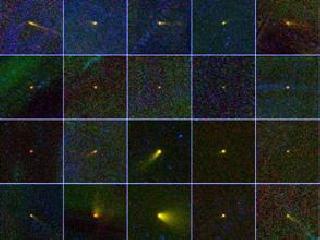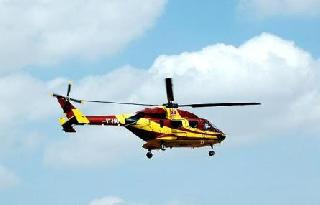
NASA's Wide-field Infrared Survey Explorer, or WISE, mapped the entire sky in infrared light. Photo: NASA/JPL
PASADENA (BNS): NASA's NEOWISE mission has completely surveyed the solar system and has discovered 20 comets, more than 33,000 asteroids in the main belt between Mars and Jupiter.
The mission has also found 134 near-Earth objects (NEOs) and many previously unknown objects. The NEOs are asteroids and comets with orbits that come within 45 million kilometers (28 million miles) of Earth's path around the sun.
NEOWISE is an enhancement of the Wide-field Infrared Survey Explorer, or WISE, mission that was launched in December 2009.
WISE scanned the entire celestial sky in infrared light about 1.5 times. It captured more than 2.7 million images of objects in space, ranging from faraway galaxies to asteroids and comets close to Earth.
"Even just one year of observations from the NEOWISE project has significantly increased our catalog of data on NEOs and the other small bodies of the solar systems," Lindley Johnson, NASA's programme executive for the NEO Observation Programme, said.
NEOWISE has successfully completed a full sweep of the main asteroid belt, the WISE spacecraft will go into hibernation mode and remain in polar orbit around Earth, where it could be called back into service in the future.
In addition to discovering new asteroids and comets, NEOWISE also confirmed the presence of objects in the main belt that had already been detected.
In just one year, it has observed about 153,000 rocky bodies out of approximately 500,000 known objects. Those include the 33,000 that NEOWISE discovered.
These observations will be key to determining the objects' sizes and compositions. Visible-light data alone reveal how much sunlight reflects off an asteroid, whereas infrared data is much more directly related to the object's size.
When combined with WISE observations, NEOWISE data will aid in the discovery of the closest dim stars, called brown dwarfs. These observations have the potential to reveal a brown dwarf even closer to us than our closest known star, Proxima Centauri, if such an object does exist.
The first batch of observations from the WISE mission will be available to the public and astronomical community in April.
 Previous Article
Previous Article Next Article
Next Article













The Indian Air Force, in its flight trials evaluation report submitted before the Defence Ministry l..
view articleAn insight into the Medium Multi-Role Combat Aircraft competition...
view articleSky enthusiasts can now spot the International Space Station (ISS) commanded by Indian-American astr..
view article